Using a nose twitch
Background and context
Nose twitches (also called a “grin” or a “touch”) are used to restrain horses for short periods of time and facilitate potentially invasive procedures e.g. joint injections with additional safety. However their use is not without risk and it is important that you are able to safely apply, hold and remove a twitch.
A horse being restrained with a correctly applied twitch
Twitches apply pressure to the horse’s upper lip and stimulate the nerves to cause endorphin release. The horse appears to enter a trance-like state and stands still in most cases. Traditional twitches (figure 1) consist of a handle (preferably plastic rather than wood), typically 2-3’ in length with a soft rope loop on the end.
Figure 1 A traditional homemade twitch with a plastic handle and a length of soft rope for the nose loop.
So called “humane” or self-retaining twitches consist of metal handles with a strand of rope and snap on the bottom to hold them in place by clipping them to the head collar. Their main advantage is that they are self-retaining but they easily fall off and most horses ignore them. If applying a self-retaining twitch position the horse’s lip away from the hinged end, to avoid pinching their skin.
applying a twitch
To apply a traditional twitch stand at the left shoulder of the horse and place the loop over the wrist of your left hand. Ensure the horse is already wearing a secure and correctly fitted head collar and lead rope. Ideally back the horse into a corner so there is space to move and work towards at the front of the animal and you can retreat out the door if necessary.
If an assistant is holding the horse for you they should stand at the left shoulder, allowing you to approach the horse from the left neck. Ensure the horse is untied but that you or the assistant retain control of the head during twitch application (see slideshow and video below for step-by-step instructions using a model).
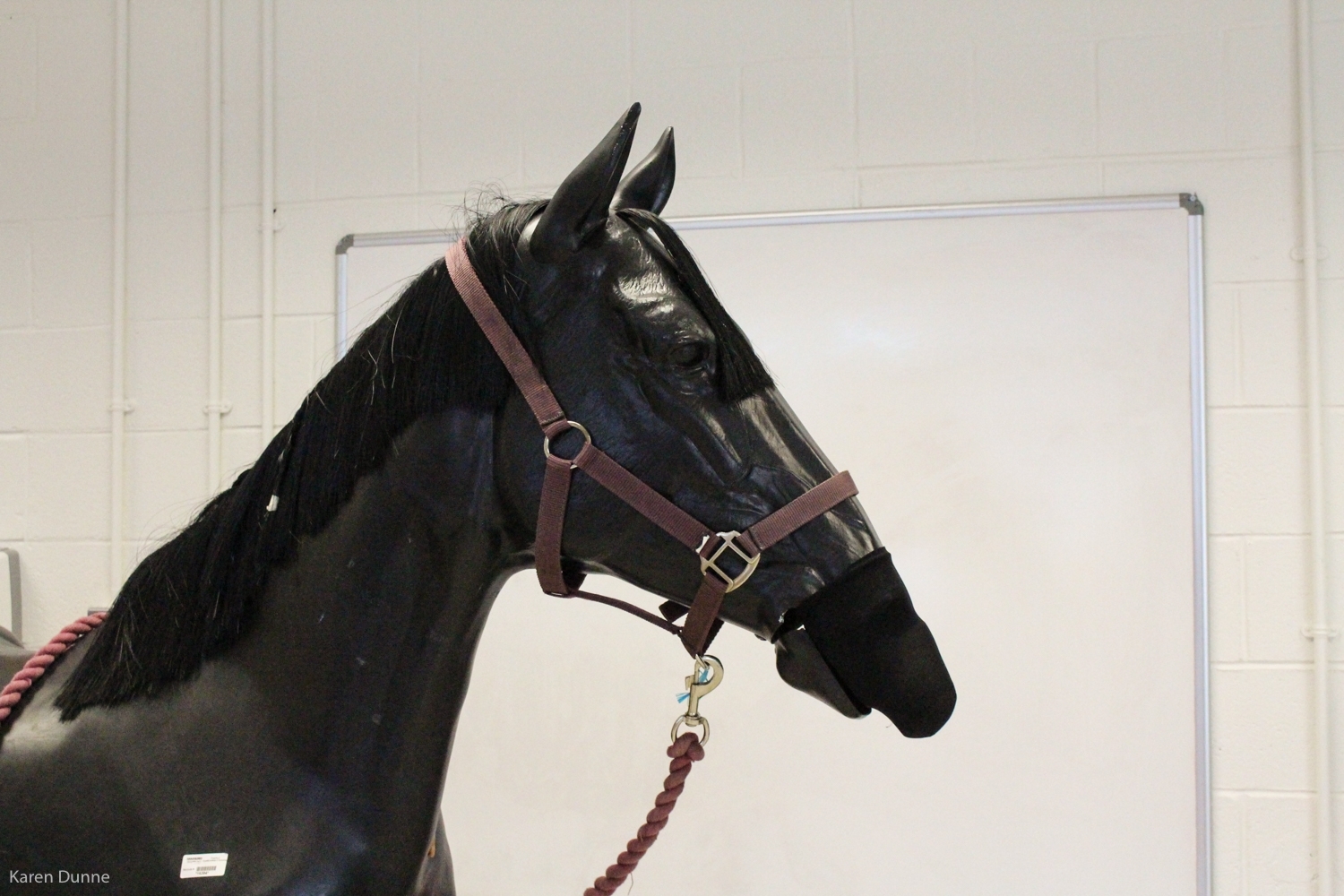


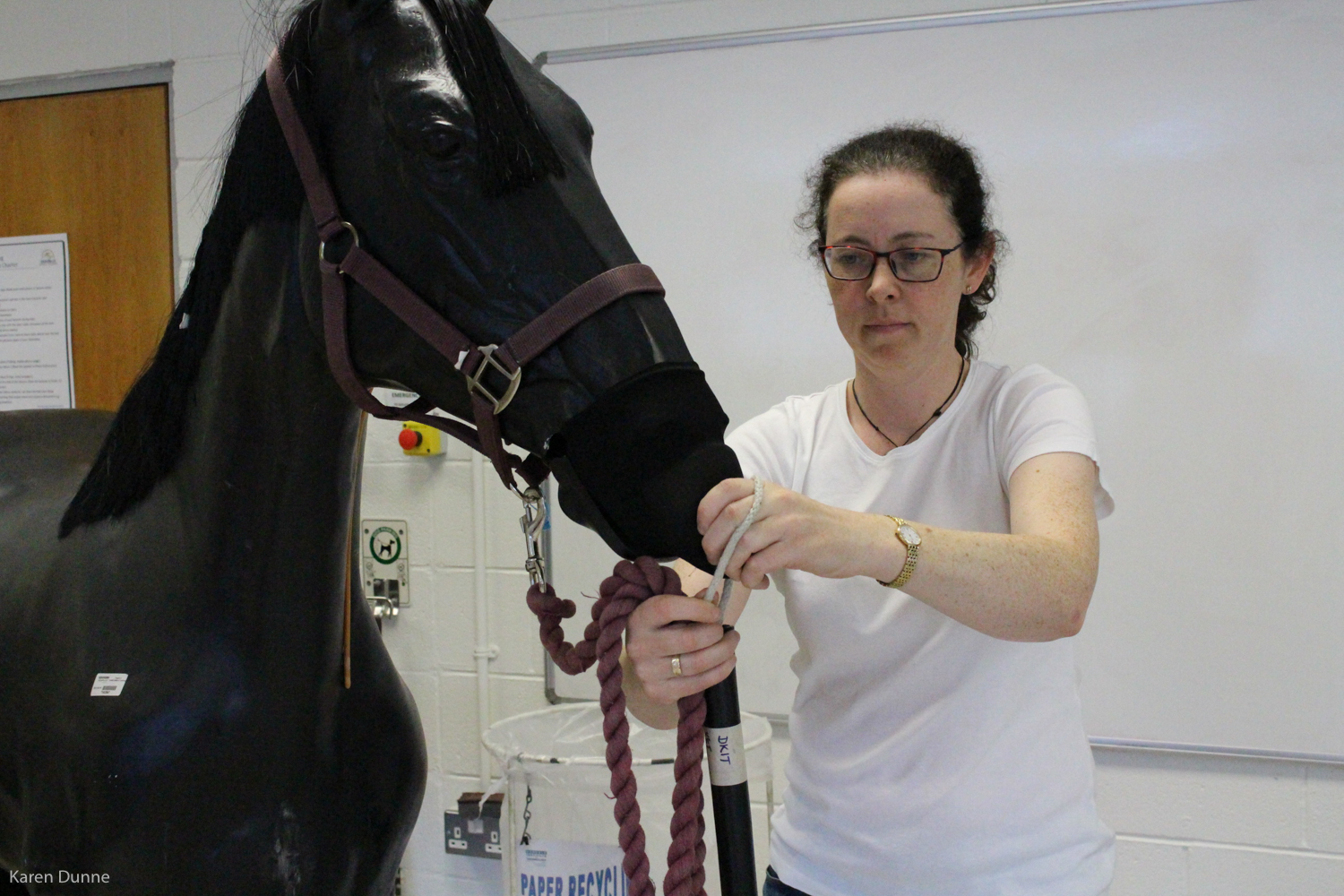
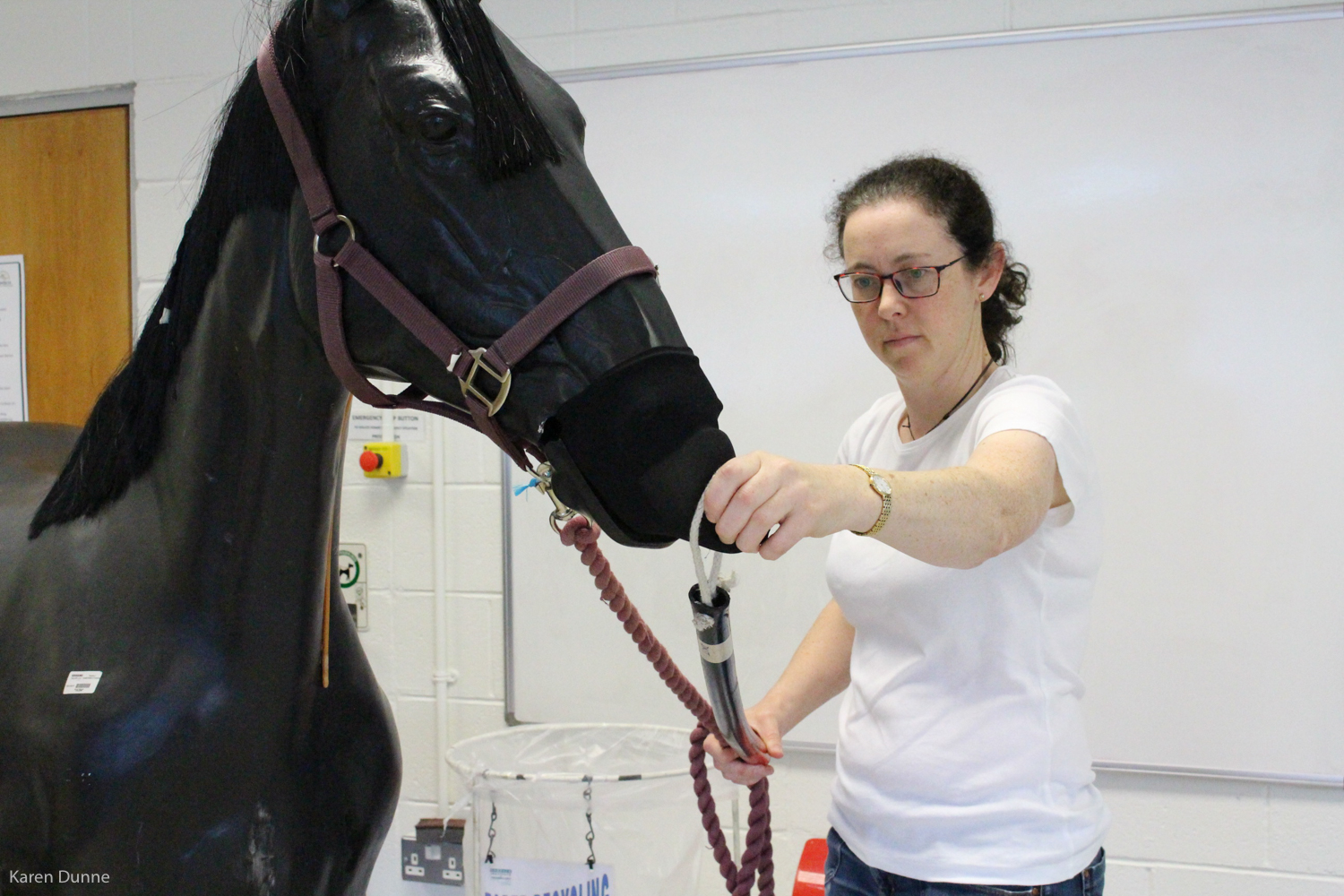
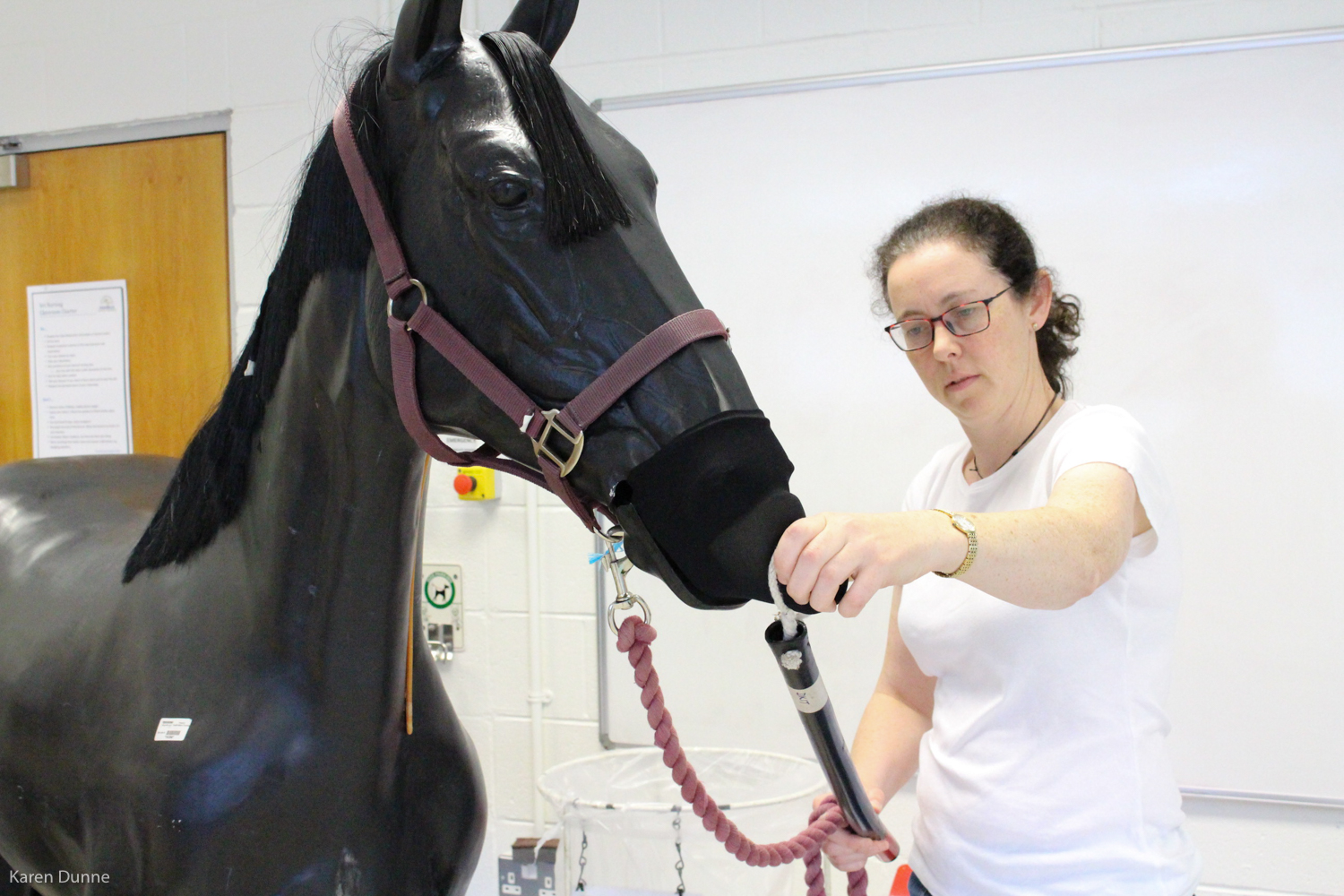
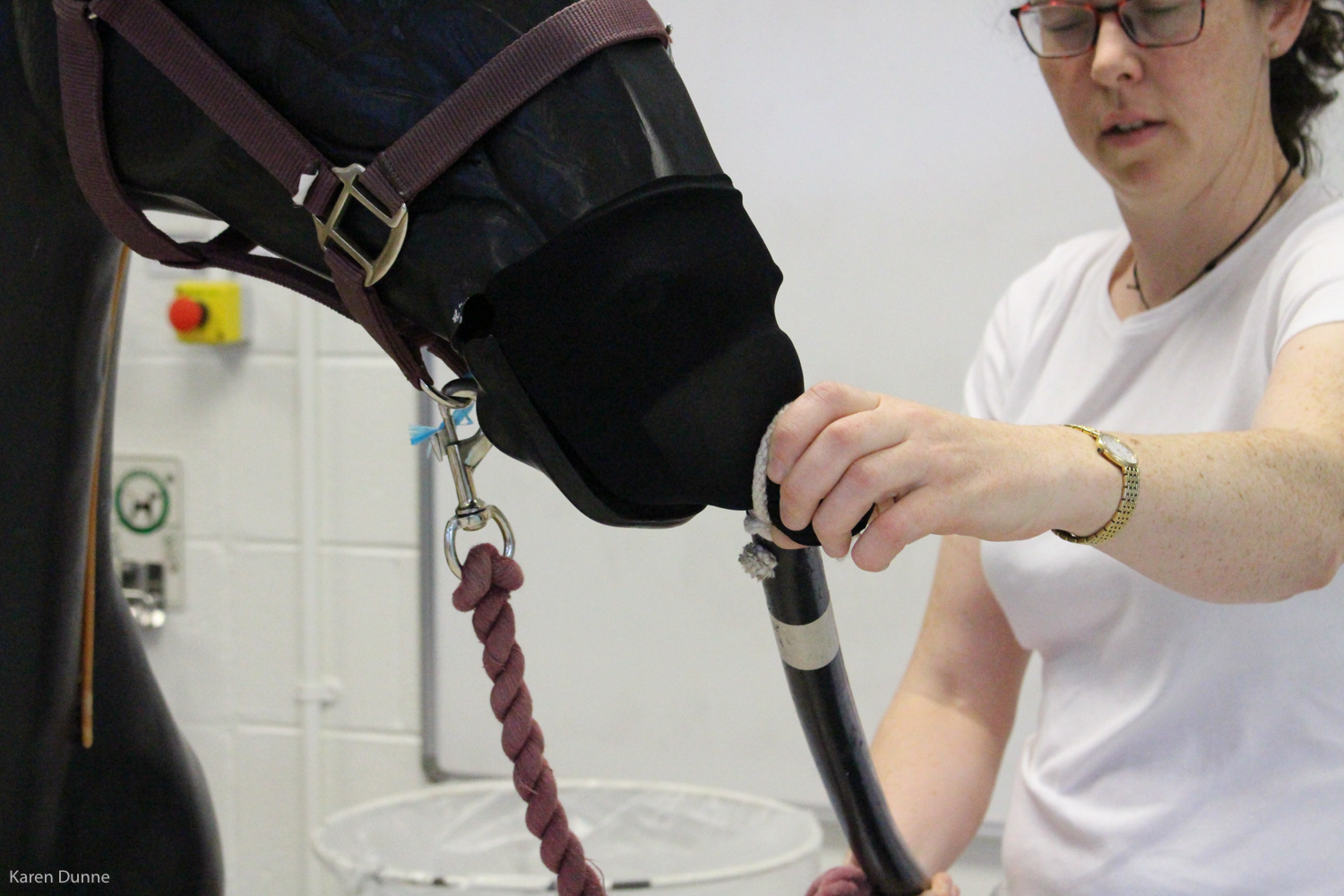
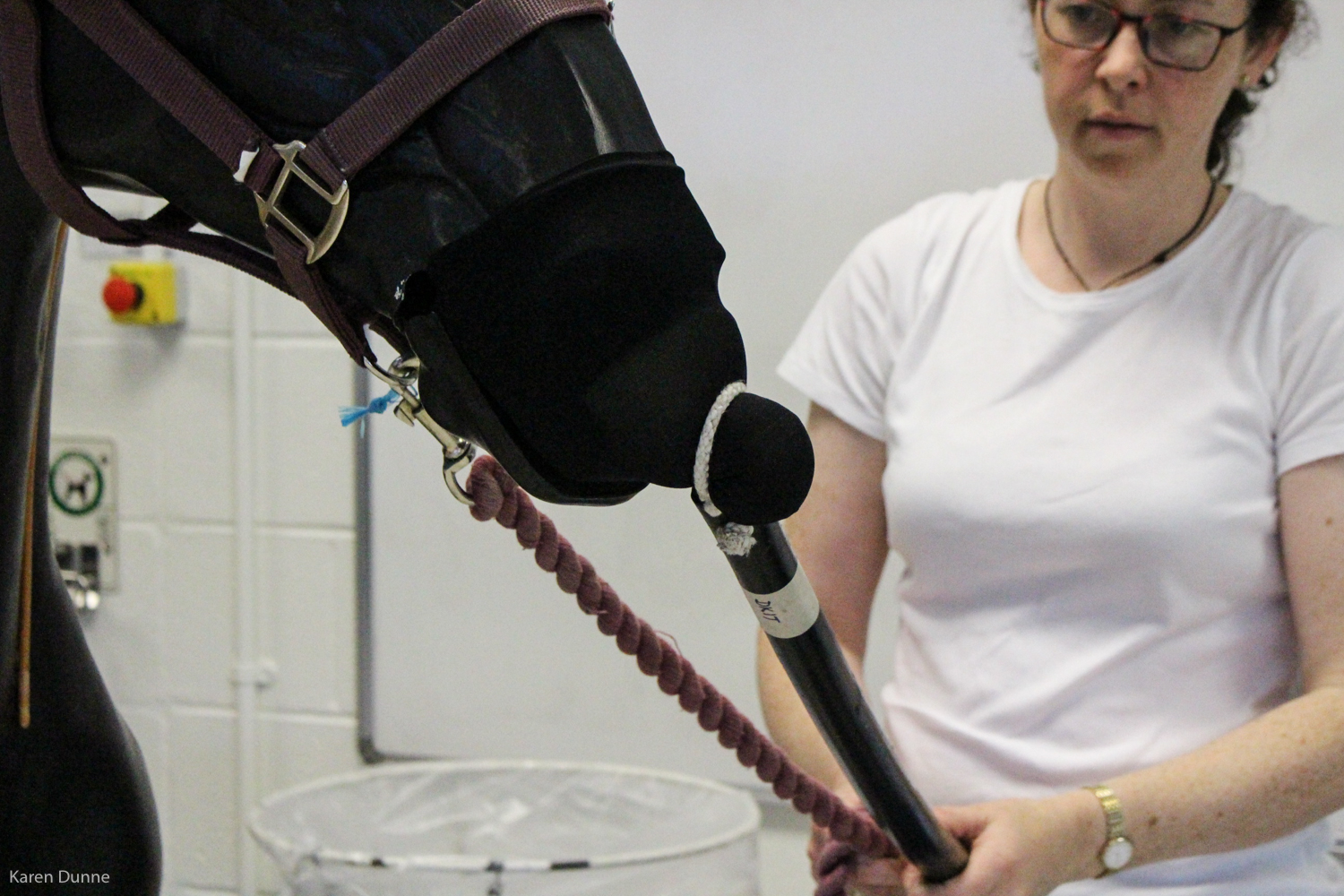
Calmly and with assurance grasp the horse’s top lip and slip the loop from your wrist over your thumb and first three fingers onto the lip without letting go. Leave your little finger out to avoid it getting caught. Twist the end of the handle with your other hand until the rope is snugly fitted and the lip is just beginning to elongate under the pressure and the horse stands still. Alternatively, the assistant can twist the handle to tighten the loop for you. In either case, make sure your fingers are not under the rope before you start to twist, it hurts!!
Once in place hold the end of the twitch in your left hand and the lead rope in your right hand. Avoid having the free end of the lead rope trail on the ground, where you might trip over it or the horse could step on it. Remain facing the horse so that you can monitor their reaction and pay attention (Figure 2).
Stand on the same side of the horse as the person working on them. If the animal objects to the procedure they will try to move away from it, so having all personnel on the same side is safer. Note that horses can react violentlywithout warning, so pay close attention at all times!
Figure 2 Holding a horse wearing a twitch. Pay close attention to the animal throughout.
monitoring
Most horses will stand quietly for a few minutes. If they start getting restless e.g. rolling their eyes, ear flicking, shifting their weight, breathing quickly or extending their head it is time to be taking the twitch off. Eventually the horse may react violently by leaping into the air and kicking out with their forelimbs. Some horses will do this without any warning. It is therefore vital to NEVER EVER STAND DIRECTLY IN FRONT OF A HORSE THAT IS WEARING A TWITCH. If you need to move the horse pull the lead rope, not the twitch!
Removing a twitch
Take the twitch off as soon as you're finished the task. Loose the rope by twisting the handle in the opposite direction and gently lift it off by moving the handle away from the head. Some horses will wriggle their lip once it's off. If the horse doesn't object give the lip a gently massage with your palm and reward them for their cooperation with praise and a pat.
If the twitch gets contaminated with blood or mucus, nasal discharge, pus etc. during use it should be washed with warm water and a mild detergent before being soaked in a correctly diluted disinfectant solution before its next use. Avoid bleach as most horses don’t like the odour.
key points
Do:
Use twitches with plastic handles and soft rope, avoid baler twine and wood
Tailor restraint - avoid using a twitch on every horse but when you do need one it can make the procedure much safer and faster for all involved
Clean and disinfect the twitch after use
Do not:
Get distracted - always pay close attention!
Wrap the lead rope around your hands
Pull the twitch - use the lead rope to move the horse if necessary
Stand in front of the horse



